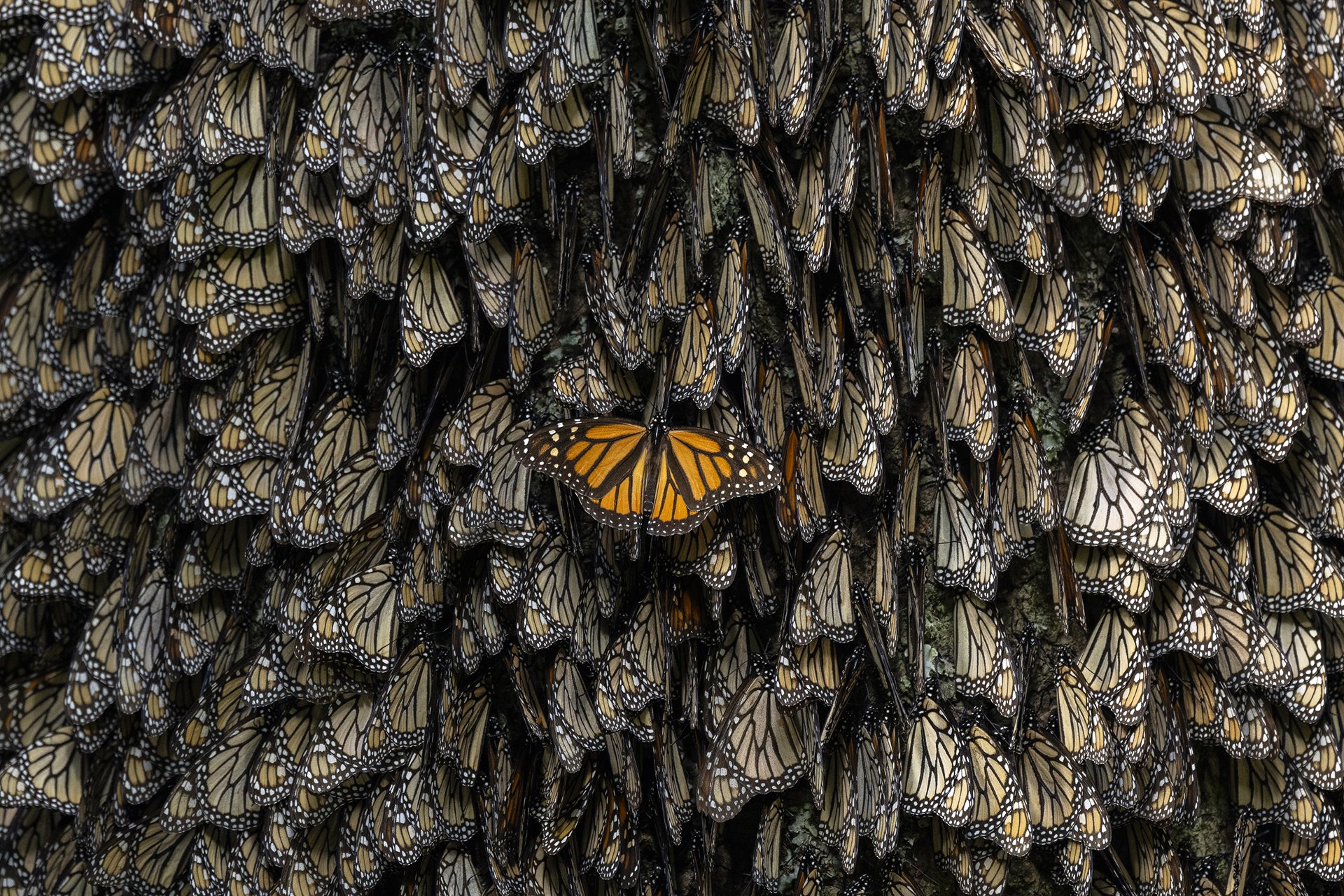A latecomer attempts to squeeze in between other monarch butterflies for warmth, at El Rosario Monarch Butterfly Sanctuary, a migratory overwintering spot within the Monarch Butterfly Biosphere Reserve in Michoacán, Mexico. Most of the eastern population of monarch butterflies overwinter in the reserve.
People across Canada, the US, and Mexico are banding together to reverse the more than 80% decline that has affected the eastern migratory monarch butterfly population since the mid-1990s.
North American Monarch butterflies (Danaus plexippus) are divided into two main groups: western monarchs, which breed west of the Rocky Mountains and overwinter in southern California; and the eastern monarchs, which breed in the Great Plains and Canada, and overwinter in central Mexico, where mountain hillsides of oyamel fir forest provide an ideal protective microclimate.
Eastern monarchs, undergo a complex multi-generational migration. In early spring, the butterflies that spent the winter in Mexico start to migrate back north. Two generations, each living two to six weeks, migrate northwards through the United States and Canada as they breed and lay their eggs. As the days get shorter and cooler, a third or fourth generation will undergo a hormonal change that puts mating on hold and extends their lifespan up to eight or nine months. This super-generation will travel 4,000 kilometers back south, to the warmth of the oyamel forests in Mexico, where they have never been before. How they find their way back to the exact same location remains a mystery.
Deforestation of these winter sanctuaries, and loss of the monarch’s breeding habitat along their migratory route due to expanding industrial agriculture, threaten the population. Once common, their staple food, milkweed, is rapidly disappearing from the prairies as a result of native praises being given over to agriculture, the use of herbicides, and mowing along roadsides. Monarch caterpillars’ diet consists solely of milkweed, and they can consume 200 times their body weight of the plant as they mature.
In addition, light pollution from cities can cause confusion between night and day, disrupting patterns of when to fly and when to rest. Roadkill on busy highways, and, recently, extreme weather events caused by climate change compound the situation.
Citizens across North America are joining forces to combat the decline of monarch butterflies by planting milkweed and other nectar-rich plants; protecting migration routes (for example by creating habitat corridors along interstate highways), and restoring the forests at the overwintering sites. The photographer has been following the story of monarch butterflies for nearly 20 years.
Are you a photographer and/or passionate about press freedom? Sign up for our newsletter to stay updated on our annual contest and to hear about exhibitions near you.

